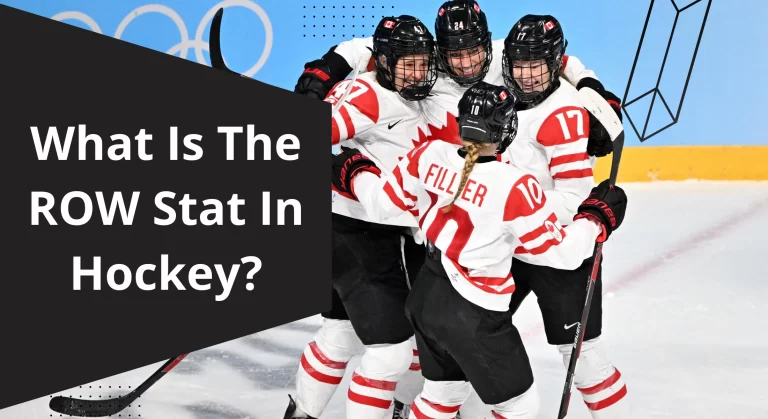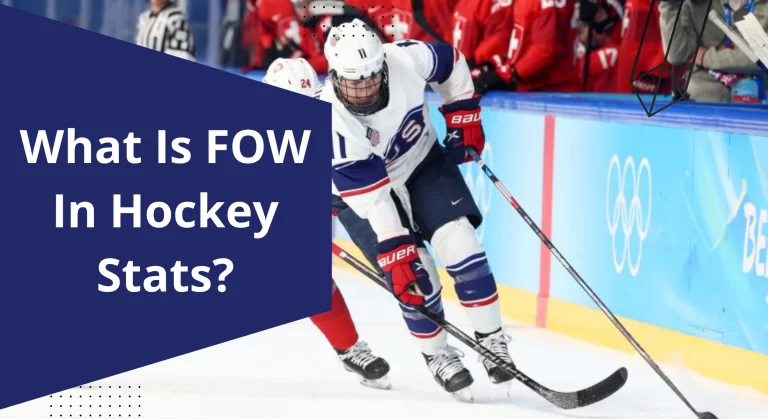What Does Plus-Minus (+/-) Mean In Hockey? (With Stats)
Hockey can’t be considered a game without stats. If you are a stat lover hockey is for you to watch or play. One of the interesting stats is the +/- stat, which is used to indicate the player’s overall performance during the game. When you see the score you will find a plus-minus stat after goals, assists, and points.
So, what is plus-minus hockey? The plus-minus hockey is a stat that is used to measure the positive and negative plus-minus of a player. It is used to determine how many times a player was present on the ice when his team scored a goal and similarly a player on the ice when his opponent’s team scored a goal.
In this article, we will guide you all about what +/- hockey means, how to calculate it and its importance, etc. Stay with us till the end to read this helpful content.
What does a +/- Mean in Hockey?
A +/- in hockey is a stat that indicates the number of the presence of a hockey player when his team scores a goal or his opponent’s team scores any goal. All players try their best to get a positive plus-minus to score good positive points and stay away from negative +/- points in hockey.

If a player is present 3 times when his team scored a goal and one time when his opponent team scored a goal. The player’s team will end up with a +2 score and his opposing team will end up with a +1 score. This is because when one of the teams scores a +1 other will get a -1 definitely.
In some cases, the players of both teams can’t get any + or – score. For instance, non of the teams will get a + or – score when they score a goal on the power play.
When is a plus or a minus given?
Here are certain conditions when players get a plus or minus score.
- The players get a plus when they are on the ice and their team scores a goal.
- The players get a minus when they are on the ice and their opposing team scores a goal.
- The players do not get any plus when they score a goal on a power play. Likewise, the opponent team does not get any minus score when the players of a team are on the power play.
- If a team players are on the ice for an empty-net goal their opponent will get a plus or minus. But, it happens if the team which scores an empty-net goal is on a power play.
Related Post: How to Read Hockey Stats: Player, Goalie, & Team
How to calculate plus or minus in hockey?
Calculation of plus and minus is simple, we just need to add the number of how often a player was on the ice when his team scored. Then subtract this number two how often their opponent scores a goal when the player is on ice.
Let us help you to understand this calculation through an example:
For Instance: Once Connor McDavid achieve 3 goals when he was on a power play. Then his opponent gets 2 goals.
His plus score was (0): The plus score was zero because no plus goal is counted when a team is on the power play.
His minus score was (-2): Connor McDavid scored -2 because his opponents score +2.
Total: (0) + (-2) = -2
So, Connor McDavid scored -2.
Importance of plus-minus in Hockey
Plus-minus is an important stat to determine the ability of the players. This stat indicates how much a player is capable to achieve success and how he plays to help his team. This stat also plays an important role to show the struggle of the players they do to get a better score.
In hockey, players get points as a reward for any penalty of a player, but the game never ends there. If a player scores a high number of +/- and does not get a high score this might be a try by the player to help his team. This may lead the team to win against the opposing team.
Drawbacks of plus-minus Stat
Some hockey lovers say that the plus-minus stat has some drawbacks. One of them is the minus score. Players get a minus when a goal is scored, even if they don’t have any concern with the goal. Sometimes they also receive a minus score when they go off the bench for a short moment.
The other drawback is related to the goalies. If a goalie receives a goal that can be troublesome to win goalie will not face it alone. All other players of the team will also get a +/- due to the goalie’s mistake. In some cases, one professional player leads his team to score well even if other players are not good.
There might be another opposite case that a good player can get stuck in a worthless team and face defeat due to them. So, this stat can badly affect the performance of many good players they can underestimate themselves because of the defeat. This is why people say this stat has some drawbacks. But definitely, this one stat can’t make the hockey game worthless.
Related Post: What is a Point in Hockey?
What’s a good plus-minus value?
This question has a quite simple answer that the plus-Minus value above zero is good to go with. The 0 value below zero is a poor value. A score above 20 throughout the season is considered a good effort.
Whereas the value below -20 throughout the season is considered a very poor performance.
The average rate for a player to score +/- is zero. This indicates that an even number of goals were scored by a team compared to the opposing team.
Frequently Asked Questions
Does the plus-minus statistic take into account the player’s position or role on the ice?
No, the plus-minus statistic does not take into account a player’s position or role on the ice. It only considers the number of goals scored while they are on the ice, regardless of their specific role in those goals.
Can a player have a neutral plus-minus, and what does that mean?
Yes, a player can have a neutral plus-minus, which is indicated by a 0. This means that the number of goals scored by the player’s team while they are on the ice is equal to the number of goals scored against their team while they are on the ice.
Is the plus-minus statistic the only measure of a player’s performance in hockey?
No, the plus-minus statistic is just one measure of a player’s performance in hockey. Other statistics, such as goals, assists, shots, and hits, can provide a more comprehensive picture of a player’s impact on the game.
Conclusion: What Does Plus-Minus (+/-) Mean In Hockey?
A plus-minus hockey is a stat to determine the performance of an individual player throughout the game or season. It is used to measure how many times a player is on the ice when his own team or opponent team scored a goal. To calculate the plus-minus in hockey we have to add the number of how often a player was on the ice when his team scored.
After that subtract it from the number of how often a person is on the ice when his opponent team scored a goal. This is an important stat to judge the ability of the players to play and help their team.






